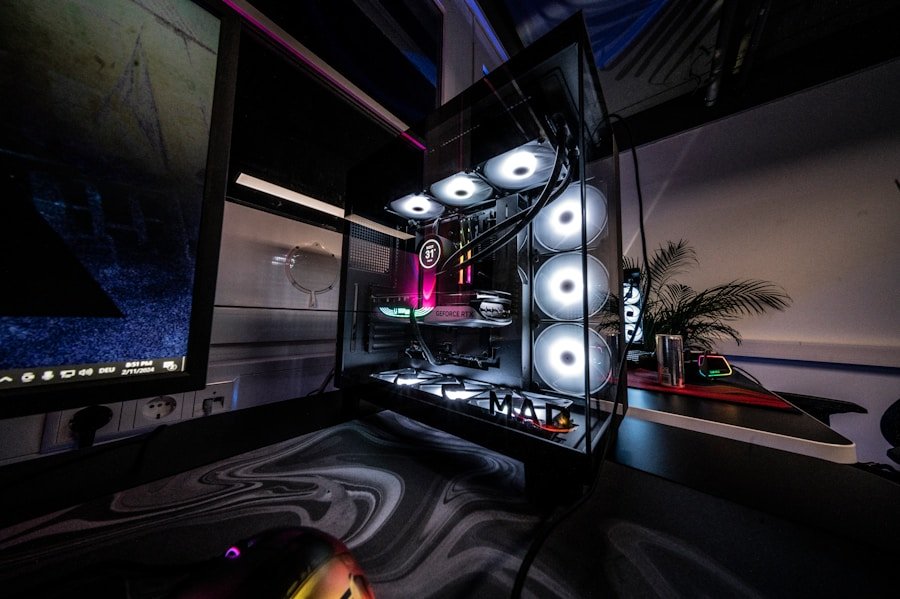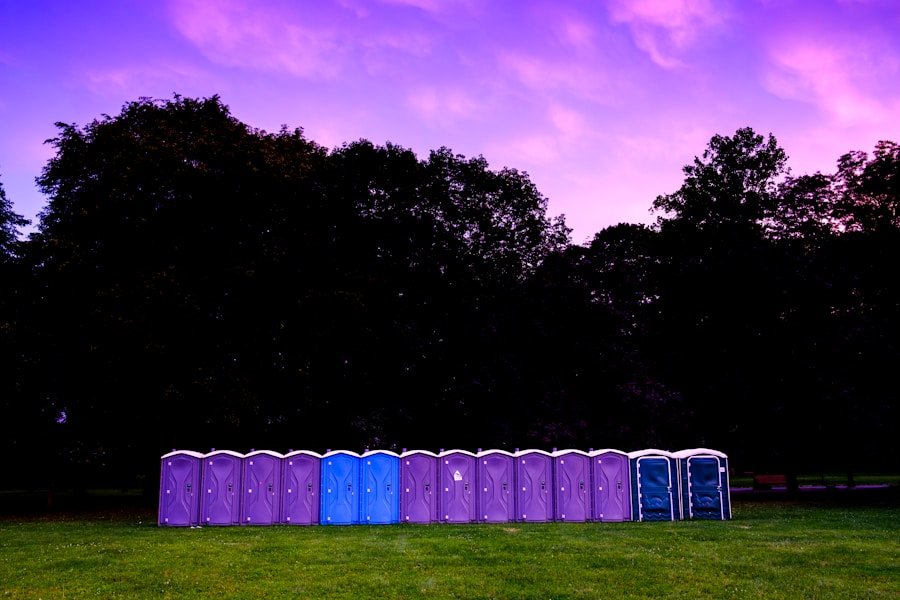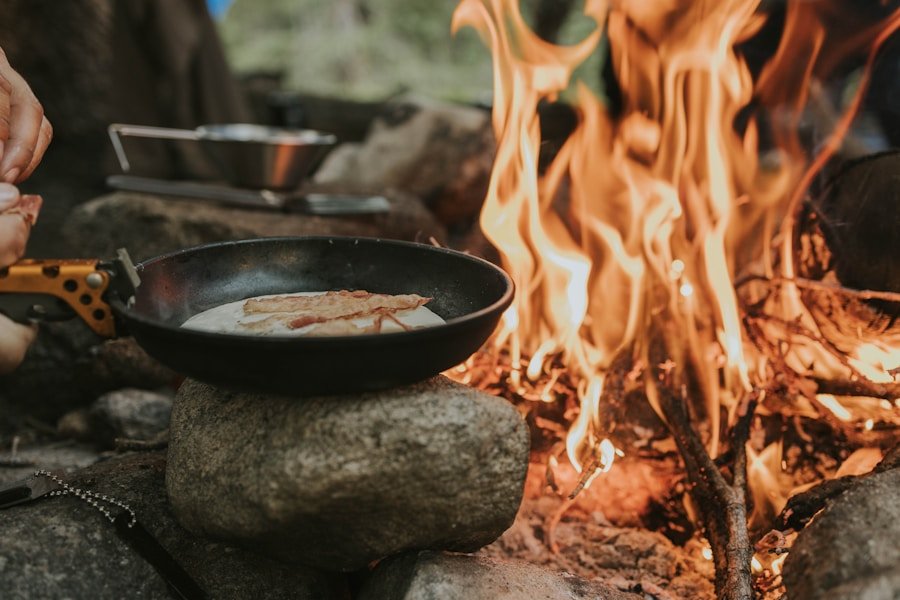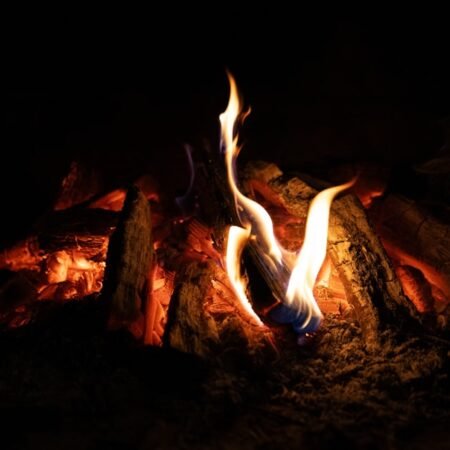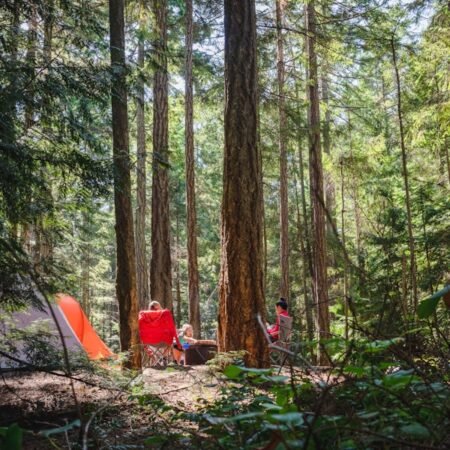When engaging in campfire cooking, having the appropriate equipment is crucial for a successful and enjoyable experience. A sturdy and reliable campfire grill is a vital piece of equipment to consider. The market offers a diverse range of campfire grills, including portable options that can be easily transported and set up at the campsite.
It is essential to select a grill that can accommodate the quantity of food to be cooked while being compact enough to fit in a vehicle or backpack. In addition to a grill, investing in a set of long-handled cooking utensils, such as tongs, spatulas, and skewers, is highly recommended. These utensils enable safe and efficient food handling over an open flame, minimizing the risk of burns or injuries.
A cast iron Dutch oven is another essential piece of equipment to consider, as it can be used to cook a wide variety of dishes over a campfire, including stews, soups, breads, and desserts. Lastly, a reliable fire starter, such as matches or a lighter, is necessary to ensure easy ignition of the campfire when it’s time to start cooking. When selecting equipment for campfire cooking, it is crucial to consider the specific needs and preferences of the camping group.
For instance, if cooking for a large group, a larger grill or multiple cooking surfaces may be required to accommodate the quantity of food. Conversely, for solo or small-group camping, a smaller, more portable grill may suffice. The types of meals to be prepared over the campfire should also be considered, as this will determine the specific equipment required.
For example, if planning to cook numerous stews and soups, investing in a high-quality Dutch oven would be a wise decision. Ultimately, choosing the right equipment for campfire cooking involves finding a balance between functionality, portability, and ease of use.
Key Takeaways
- Choose the right equipment: Invest in quality cast iron cookware and long-handled utensils for safe and efficient campfire cooking.
- Build and maintain a safe campfire: Follow local regulations and guidelines for building and maintaining a safe campfire, and always have a water source nearby.
- Essential ingredients and recipes: Keep it simple with easy-to-prepare ingredients like foil-wrapped potatoes, skewered meats, and campfire classics like s’mores.
- Cooking techniques and tips: Use the hot coals for even heat distribution, and rotate food regularly for even cooking. Consider using a Dutch oven for versatile cooking options.
- Safety precautions and fire regulations: Always follow fire regulations and never leave a campfire unattended. Keep a first aid kit handy and be prepared for any emergencies.
Building and Maintaining a Safe Campfire
Building and maintaining a safe campfire is essential for successful campfire cooking. Before you start building your campfire, it’s important to check with the local authorities or campground staff to ensure that fires are permitted in the area where you’ll be camping. Once you’ve confirmed that it’s safe to build a fire, choose a location for your campfire that is at least 15 feet away from tents, trees, and other flammable materials.
Clear away any debris or vegetation from the area where you plan to build your fire pit, and create a ring of rocks or metal fire ring to contain the flames. When building your campfire, start with small pieces of kindling and gradually add larger pieces of wood as the fire grows. It’s important to never leave your campfire unattended, and always have a bucket of water or a fire extinguisher nearby in case of emergencies.
In addition to building a safe campfire, it’s important to know how to properly maintain and extinguish your fire when you’re finished cooking. As you cook over the campfire, be mindful of the size and intensity of the flames, and adjust the wood as needed to maintain a steady heat. When you’re finished cooking, allow the fire to burn down to hot coals before extinguishing it completely with water.
Use a shovel or stick to stir the ashes and embers, making sure that there are no remaining hot spots. Once the fire is completely out, carefully dispose of the ashes in a designated area or pack them out with your other trash. By following these guidelines for building and maintaining a safe campfire, you can ensure that your campfire cooking experience is not only enjoyable but also responsible and environmentally friendly.
Essential Ingredients and Recipes
When it comes to campfire cooking, simplicity is key. While it’s certainly possible to prepare elaborate meals over an open flame, some of the best campfire dishes are those that require just a few simple ingredients and minimal preparation. One classic campfire recipe that never fails to impress is foil packet meals.
These meals typically consist of meat, vegetables, and seasonings wrapped in aluminum foil and cooked directly in the coals of the campfire. Foil packet meals are incredibly versatile and can be customized to suit any taste preferences. Another popular campfire dish is the humble s’more, which requires just three ingredients – graham crackers, chocolate bars, and marshmallows – but never fails to satisfy a sweet tooth.
For those looking for a heartier meal, consider preparing a one-pot stew or chili in a cast iron Dutch oven. These dishes can be easily prepared ahead of time and then cooked slowly over the campfire for a delicious and satisfying meal. In addition to these classic campfire recipes, there are countless other dishes that can be prepared over an open flame with just a few simple ingredients.
For example, grilled vegetables are an easy and healthy side dish that can be cooked directly on a campfire grill with just a drizzle of olive oil and some seasonings. Similarly, marinated meats such as chicken or steak can be grilled over the campfire for a flavorful and satisfying main course. For dessert, consider preparing grilled fruit skewers or even baking a simple cake or cobbler in a Dutch oven.
Ultimately, the key to successful campfire cooking is to keep things simple and focus on using fresh, high-quality ingredients that can be easily prepared and cooked over an open flame.
Cooking Techniques and Tips
| Recipe Name | Preparation Time | Cooking Time | Servings |
|---|---|---|---|
| Campfire Pizza | 15 minutes | 10 minutes | 4 |
| Grilled Corn on the Cob | 5 minutes | 15 minutes | 6 |
| Foil Packet Potatoes | 10 minutes | 30 minutes | 4 |
Cooking over an open flame requires some different techniques than traditional stovetop or oven cooking. One important technique to master when it comes to campfire cooking is controlling the heat of the fire. Unlike a stovetop where you can easily adjust the temperature with the turn of a knob, cooking over a campfire requires careful attention to the size and intensity of the flames.
To control the heat of your campfire, start by building a well-structured fire with small kindling at the bottom and gradually adding larger pieces of wood as needed. Once your fire is established, pay attention to how the flames behave as you cook – if they’re too high or too intense, add more wood or move your cooking surface further away from the flames. Another important cooking technique for campfire cooking is using foil packets or cast iron cookware to prepare meals.
Foil packets are an easy and convenient way to cook meat and vegetables over an open flame without the need for pots or pans. Simply wrap your ingredients in aluminum foil with some seasonings and place them directly in the coals of your campfire for an easy and delicious meal. Similarly, cast iron cookware such as Dutch ovens are incredibly versatile for campfire cooking – they can be used to prepare everything from stews and soups to breads and desserts.
By mastering these essential cooking techniques for campfire cooking, you can ensure that your meals turn out delicious and satisfying every time.
Safety Precautions and Fire Regulations
When it comes to campfire cooking, safety should always be a top priority. Before you start cooking over an open flame, it’s important to familiarize yourself with any fire regulations or restrictions that may be in place at your campground or outdoor recreation area. Some areas may have specific rules regarding where fires can be built, what types of fuel can be used, and whether fires are permitted at all during certain times of year.
Additionally, it’s important to always have a bucket of water or a fire extinguisher nearby when cooking over a campfire in case of emergencies. In addition to following any fire regulations that may be in place, there are several other safety precautions that should be taken when cooking over an open flame. For example, always use long-handled cooking utensils when handling food over a campfire to avoid burns or injuries.
It’s also important to never leave your campfire unattended while cooking – always have someone present to monitor the flames and ensure that they remain under control. Finally, when extinguishing your campfire after cooking, be sure to completely douse the flames with water and stir the ashes thoroughly to ensure that there are no remaining hot spots. By following these safety precautions and being mindful of any fire regulations that may be in place, you can enjoy delicious meals cooked over an open flame while also ensuring that you’re being responsible and respectful of the natural environment.
Cleaning and Maintaining Campfire Cooking Equipment
After enjoying a delicious meal cooked over an open flame, it’s important to properly clean and maintain your campfire cooking equipment to ensure that it remains in good condition for future use. One essential piece of equipment that requires regular cleaning and maintenance is a campfire grill. After each use, be sure to scrub the grill grates with a wire brush or grill scraper to remove any food residue or grease buildup.
If your grill grates are particularly dirty, consider soaking them in hot soapy water before scrubbing them clean. In addition to cleaning your grill grates after each use, it’s also important to properly care for any cast iron cookware that you use for campfire cooking. Cast iron should never be cleaned with soap or harsh detergents – instead, use hot water and a stiff brush to scrub away any food residue before drying the cookware thoroughly with a towel.
After cleaning your cast iron cookware, be sure to apply a thin layer of oil or shortening to prevent rusting and maintain its non-stick surface. Finally, don’t forget to properly clean and store any long-handled cooking utensils that you use for campfire cooking. After each use, wash them with hot soapy water before drying them thoroughly and storing them in a dry place.
By following these guidelines for cleaning and maintaining your campfire cooking equipment, you can ensure that it remains in good condition for many more delicious meals cooked over an open flame.
Enjoying the Experience: Creating Memorable Meals in the Great Outdoors
While mastering the art of campfire cooking requires some practice and patience, it’s ultimately about enjoying the experience of preparing delicious meals in the great outdoors. One of the most rewarding aspects of campfire cooking is being able to connect with nature while creating memorable meals with friends and family. Whether you’re grilling steaks over an open flame or baking fresh bread in a Dutch oven, there’s something truly special about preparing food in the great outdoors that simply can’t be replicated in a traditional kitchen.
In addition to enjoying the process of preparing meals over an open flame, campfire cooking also provides an opportunity to experiment with new recipes and techniques that you may not have tried before. For example, you might discover that grilling vegetables over a campfire imparts a unique smoky flavor that can’t be achieved on a stovetop or oven. Similarly, baking bread or desserts in a Dutch oven allows for slow, even cooking that results in perfectly crispy crusts and tender interiors.
Ultimately, mastering the art of campfire cooking is about embracing the experience of preparing meals in nature while creating lasting memories with friends and family. Whether you’re camping in the mountains or spending a weekend at the beach, there’s no better way to enjoy delicious food than by cooking it over an open flame surrounded by the beauty of the great outdoors. In conclusion, mastering the art of campfire cooking requires careful consideration of equipment selection, fire safety measures, ingredient choices, cooking techniques, safety precautions, cleaning practices, and ultimately enjoying the experience itself.
By following these essential tips for beginners in campfire cooking, anyone can elevate their outdoor culinary skills while creating memorable meals in nature with friends and family. So next time you’re planning a camping trip or outdoor adventure, don’t forget to pack your favorite ingredients and cooking equipment – because there’s nothing quite like enjoying delicious food cooked over an open flame in the great outdoors!
FAQs
What are the essential tips for beginners in campfire cooking?
Some essential tips for beginners in campfire cooking include choosing the right cooking equipment, preparing and organizing ingredients beforehand, practicing fire safety, and learning different cooking techniques such as grilling, foil packet cooking, and skewer cooking.
What are the best cooking equipment for campfire cooking?
The best cooking equipment for campfire cooking includes cast iron skillets, Dutch ovens, grills, skewers, and aluminum foil for foil packet cooking. These items are durable, versatile, and can withstand the high heat of a campfire.
How can beginners practice fire safety during campfire cooking?
Beginners can practice fire safety during campfire cooking by choosing a safe cooking location away from flammable materials, keeping a bucket of water or a fire extinguisher nearby, and never leaving the campfire unattended. It’s also important to fully extinguish the fire after cooking.
What are some popular campfire cooking techniques for beginners?
Some popular campfire cooking techniques for beginners include grilling, foil packet cooking, skewer cooking, and using a Dutch oven. These techniques allow for a variety of delicious meals to be prepared over a campfire.
How can beginners prepare and organize ingredients for campfire cooking?
Beginners can prepare and organize ingredients for campfire cooking by pre-cutting and pre-measuring ingredients at home, packing them in resealable bags or containers, and labeling them for easy access at the campsite. This helps streamline the cooking process and minimizes the need for additional kitchen tools at the campsite.





